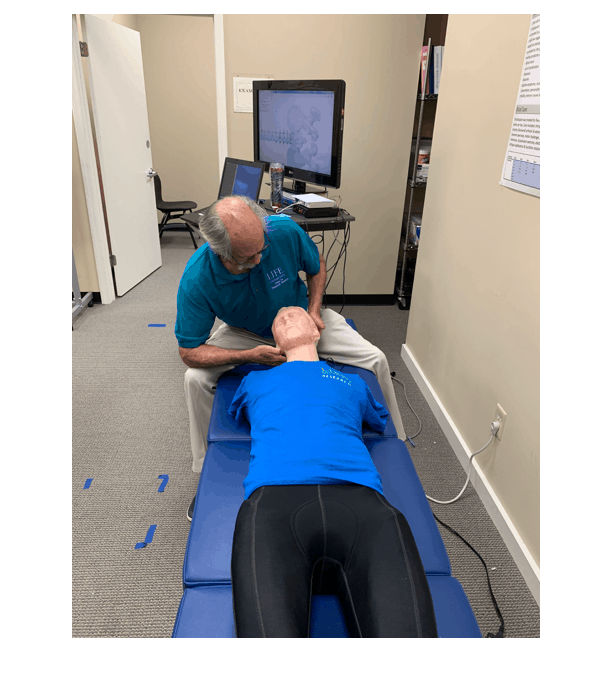Our researchers at the Dr. Sid E. Williams Center for Chiropractic Research are at the forefront of studying the biomechanics of the chiropractor’s most important tool, the adjustment. Especially for education, they have developed a mannequin with the look, feel, size and weight of an average person. Meet Pat, an anatomically accurate, 3-D printed axial skeleton coated in realistic silicone skin & muscles. Embedded pressure sensors measure location of contact on the mannequin. Internal controls create intersegmental fixation at specific spinal regions. Pat will help students learn to locate vertebral landmarks by palpation, find restricted motion and perform adjustments with controlled amounts of force and speed, and along a specific vector. The complete system would show student performance in comparison to a benchmark. Pat allows students to receive immediate, objective feedback about the “where, how hard, how fast and in which direction” part of adjusting before they move on to human patients.
Pat’s Key Features:
- 3-D printed spine, pelvis and occiput surrounded by viscoelastic skin and soft tissue
- 64 pressure sensors at key spinal landmarks from EOP to pelvis and sacrum
- Software monitors pressure levels at each sensor and shows location of contact on screen.
- Location labels on computer screen can be turned on or off
- Ability to zoom in to specific regions on computer screen
- Screen indicates heavy or light forces, which can have sensitivity modified
- Strong enough to withstand thrusts, and when paired with force plate table or glove can measure force profiles
- Right or left fixation capabilities within lumbar and cervical regions. Individual thoracic segments can be fixated.


Social Media